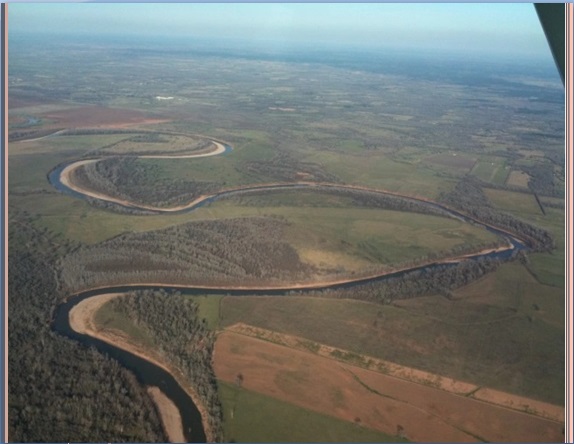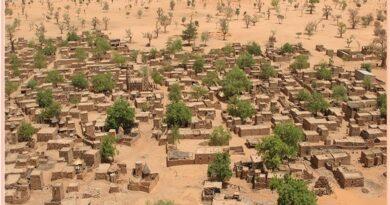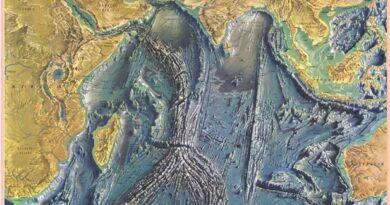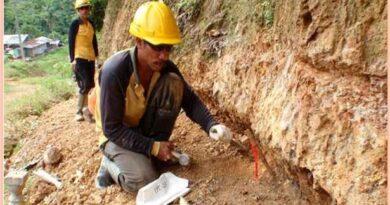Depositional landform- “The Point Bar”
Point Bar in geology
A river is the best example of the linear flow of running water. It can be divided into three Stages, on the basis of its course –
- Upper course or Youth Stage- This Stage is Dominated by Erosion.
- Middle course or Mature Stage- This Stage is dominated by Transportation
- Lower course or Old stage- This Stage is Dominated by Deposition
The point bar is Depositional Landforms forms due to Running Water. It is also known as meander bars. They are found on the convex side of meanders of large rivers and are sediments deposited in a linear fashion by flowing waters along the bank. The concave bank of a meander is known as a cut-off bank and the convex side is known as a slip-off.
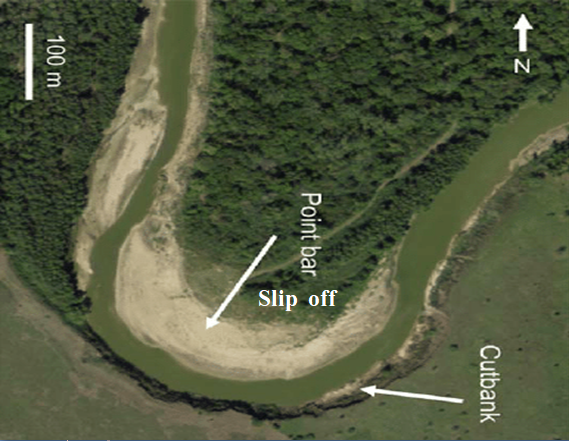
Point bar in Geology-Definition
A point bar is a depositional feature made of alluvium that accumulates on the inside bend of streams. It is a low, curved ridge of sand and gravel along the inner bank of a meandering stream. The Point bars form through the slow accumulation of sediment deposited by the stream when its velocity drops along the inner bank. Point bars are deposited in abundance in mature or meandering streams.
River Point Bars are almost uniform in profile and in width and contain mixed sizes of sediments. When a river meanders the highest energy is near the outer edge of the oxbow shape or meander bend and is generally where erosion takes place (cut bank). Stream energy on the opposite side (the point bar) is much lower and cannot carry as much sediment and becomes depositional. As the stream erodes the cut bank the point bar aggrades accordingly.
Point bars are very similar to towheads, or river islands but often smaller in size. As meanders grow into deep loops, the same may get cut off due to erosion at the inflexion point and are left to be oxbow lakes. A river Point bars are composed of sediment that is well-sorted and typically reflects the overall capacity of the river or stream. Since they are low-lying, they are often overtaken by floods and can accumulate driftwood and other debris during times of high water levels.
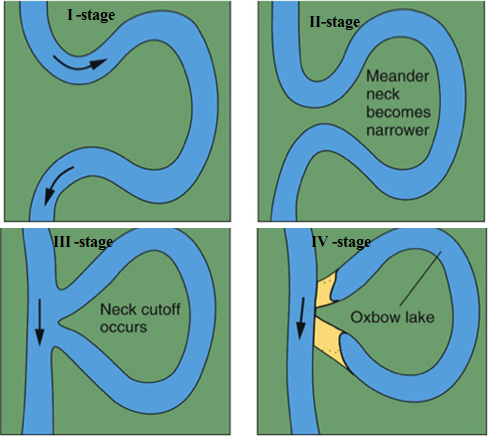
A River Point bars are popular rest stops for boaters and rafters due to their near-flat topography and the fact that the water speed is slow. However, camping on a point bar can be dangerous as a flash flood that raises the stream level in a second can wash out a campsite in moments.
Formation of Point Bar
When water flows around a bend in a river or stream the secondary flow of the river water does not flow parallel to the banks of the stream but flows partly across the floor of the stream toward the inside of the stream where the radius of curvature is smallest. This movement of the boundary layer is capable of rolling loose particles including sand, gravel, siltstones, and other submerged material along the floor of the stream toward the point bar.
Also read- The Serpent Rock-“Ophiolite”, Its Origin, and Evolution
Due to the circular path of a river or stream around a loop the surface of the water is slightly higher near the concave bank, with a larger radius than near the convex bank. This slight slope on the water surface of the stream causes a greater water pressure on the floor of the river near the concave bank than near the convex bank. This pressure gradient drives the slower depositional layer across the floor of the stream toward the convex bank.
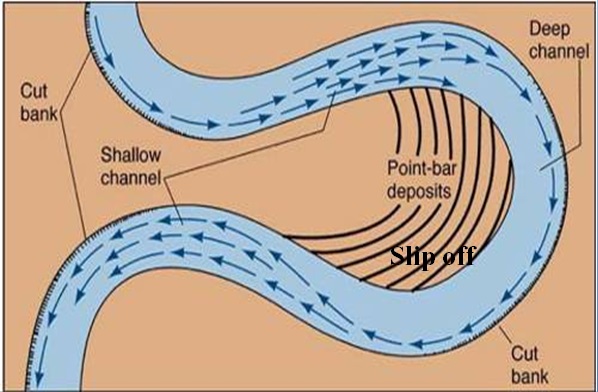
The concave bank is often a cut bank and an area of the erosional part. The eroded material is washed and rolled across the floor of the stream by the secondary flow and deposited on the point bars only a small distance downstream from its original location cut bank. River point bar typically has a gently sloping floor with shallow water. The shallow water is mostly the accumulated area and does not have much speed.
